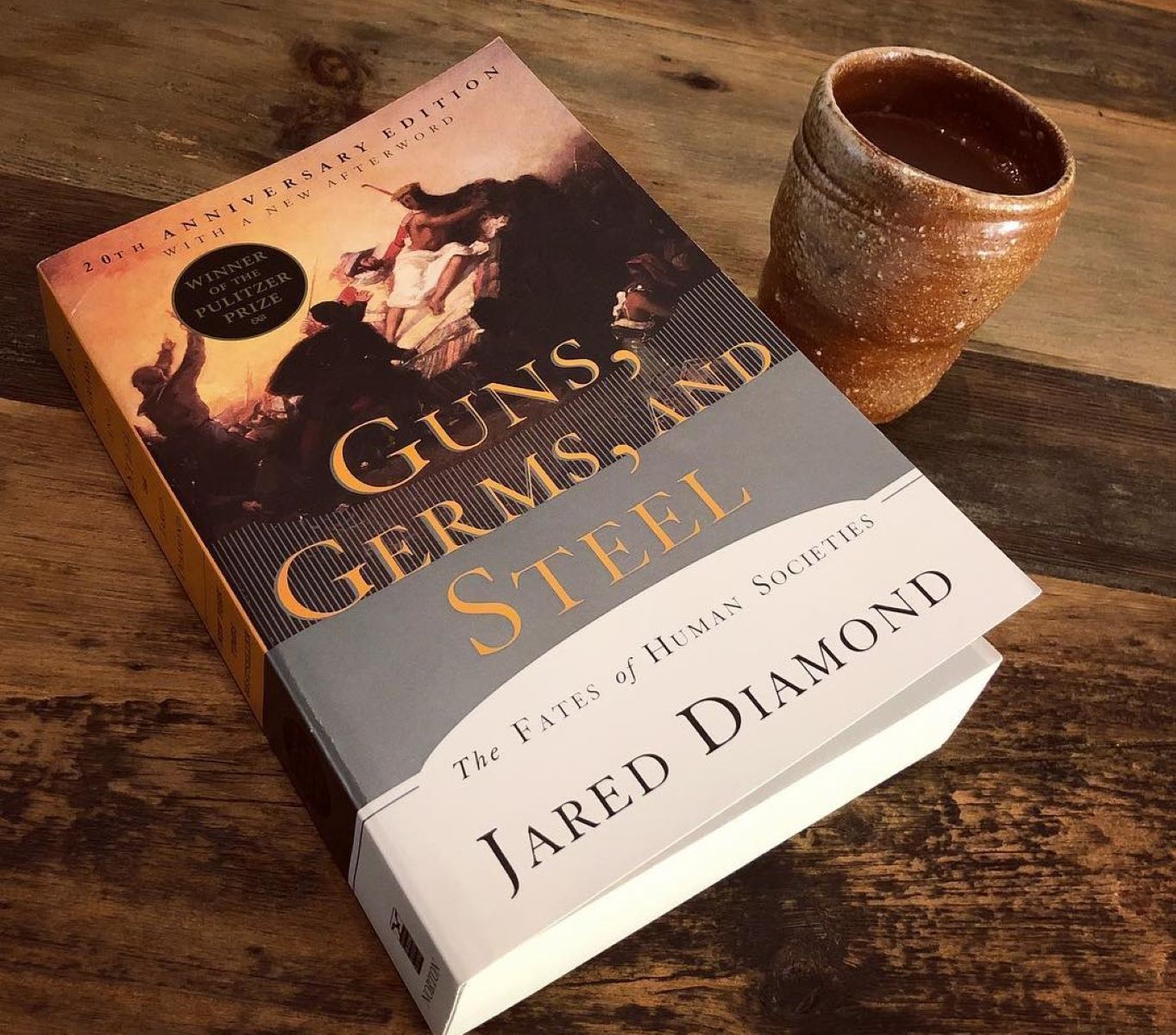
If you have ever wondered about the forces that shape human history and why certain societies thrived while others declined, then Jared Diamond’s book “Guns, Germs, and Steel” is a must-read. This groundbreaking work explores the interconnectedness of guns, germs, and steel in shaping the fate of civilizations.
Spanning thousands of years and continents, Diamond delves deep into the factors that led to the rise of powerful societies and the conquest of others. In this article, we will highlight 11 fascinating facts from “Guns, Germs, and Steel” that shed light on the complex interplay between geography, biology, and technology in determining the course of human history.
Key Takeaways:
- Guns, Germs, and Steel by Jared Diamond won the Pulitzer Prize in 1998 and challenges the idea of cultural superiority, emphasizing the impact of geography and technology on human history.
- The book explores the role of infectious diseases, technology, and interconnectedness in shaping human societies, sparking passionate debates and further research in the field of history and anthropology.
The book revolutionized our understanding of human history.
Guns, Germs, and Steel, written by Jared Diamond, is a groundbreaking work that explores the factors that shaped human societies and civilizations. This influential book challenges conventional narratives by examining the profound influence of guns, germs, and steel on the trajectory of human development.
It won the Pulitzer Prize for General Nonfiction in 1998.
Recognized for its extraordinary contribution to scholarship, Guns, Germs, and Steel received the prestigious Pulitzer Prize in This accolade solidified its position as a seminal work in the field of history and anthropology, captivating readers with its thought-provoking insights.
Diamond’s research started during his fieldwork in Papua New Guinea.
Jared Diamond’s deep interest in understanding the disparities between different societies began during his extensive fieldwork in Papua New Guinea. His firsthand experiences studying the diverse cultures and environments of the region fostered the foundation for his groundbreaking theories discussed in the book.
The geographic advantages of certain regions played a crucial role in the rise of civilizations.
Guns, Germs, and Steel highlights the significance of geographic and environmental factors in shaping the destinies of societies. Diamond argues that regions with abundant natural resources, favorable climates, and access to trade routes had a higher likelihood of developing advanced civilizations and technological prowess.
Diamond explores the impact of infectious diseases on human history.
One of the key concepts explored in Guns, Germs, and Steel is the devastating impact of infectious diseases on indigenous populations. Diamond investigates how the transmission of diseases, such as smallpox, influenza, and measles, by European explorers and colonizers significantly influenced the outcomes of contact between different civilizations.
The book delves into the role of technology in shaping the course of history.
Technological advancements have played a crucial role in the rise and fall of civilizations throughout history. Guns, Germs, and Steel examines how innovations like firearms and steel weaponry, as well as the development of agriculture and domestication of animals, have shaped human societies by providing military, economic, and agricultural advantages.
Diamond challenges the notion of inherent superiority among different civilizations.
Guns, Germs, and Steel tackles the controversial topic of cultural superiority, arguing that successful societies are not inherently superior but rather benefited from a combination of geographical advantages, access to resources, and historical circumstances. This thought-provoking perspective sheds light on the complex forces at play in shaping the world as we know it today.
The book explores the interconnectedness of different parts of the world.
Guns, Germs, and Steel emphasizes the interconnected nature of human history and how the fates of societies are intertwined across continents. Diamond examines the global exchange of ideas, technologies, and resources, illustrating how these interactions have shaped the development of human societies over thousands of years.
It challenges traditional narratives of conquest and colonization.
Guns, Germs, and Steel offers an alternative explanation for the dominance of certain civilizations, challenging traditional narratives of conquest and colonization. Diamond argues that the uneven distribution of power can be attributed to geographical advantages rather than inherent racial or intellectual superiority.
The book has sparked extensive debate and further research.
Guns, Germs, and Steel has ignited passionate discussions among scholars, historians, and anthropologists. Its thought-provoking theories have prompted further research and interpretations, encouraging a critical examination of the factors that shape human history and the dynamics of cultural evolution.
Guns, Germs, and Steel is a must-read for anyone interested in understanding human history.
With its rich insights, meticulous research, and thought-provoking theories, Guns, Germs, and Steel has become a seminal work in the field of history and anthropology. This captivating book challenges conventional wisdom and provides a fresh perspective on the forces that have shaped our world. Whether you are a scholar, a student, or simply curious about human history, this book is an invaluable resource.
Conclusion
In conclusion, Jared Diamond’s “Guns, Germs, and Steel” is a captivating and thought-provoking book that delves into the complex reasons behind the inequalities of human societies. Through extensive research and analysis, Diamond presents a compelling argument that factors such as geographical advantages, access to natural resources, and the development of technology have played crucial roles in shaping the course of human history.By examining the impact of guns, germs, and steel on different civilizations, Diamond provides valuable insights into the interconnectedness of societies and the profound influence of environmental and geographical factors on their development. This book challenges our understandings of socio-economic inequality and offers a fresh perspective on the forces that have shaped the world we live in today.Overall, “Guns, Germs, and Steel” is a must-read for anyone interested in understanding the complex dynamics that have influenced the rise and fall of civilizations throughout history. Jared Diamond’s meticulous research and compelling storytelling make this book an engaging and enlightening exploration of the factors that have shaped the world as we know it.
FAQs
Q: What is the main premise of “Guns, Germs, and Steel”?
A: The main premise of “Guns, Germs, and Steel” is that geographical and environmental factors, rather than inherent differences in human intelligence or capability, are the primary drivers behind the inequality of human societies.
Q: How does Jared Diamond support his argument?
A: Diamond supports his argument through a vast array of evidence, including in-depth studies of different cultures, examination of the impact of geographical advantages, and analysis of the spread of guns, germs, and steel throughout history.
Q: What are some of the key takeaways from the book?
A: Some key takeaways from “Guns, Germs, and Steel” include the significance of environmental factors in shaping societal development, the role of technology in the rise and fall of civilizations, and the interconnectivity of different regions and cultures.
Q: Is “Guns, Germs, and Steel” relevant in today’s world?
A: Yes, the concepts explored in “Guns, Germs, and Steel” remain highly relevant today. The book prompts us to consider the long-term effects of environmental factors, technology, and cultural exchange on the course of human history.
Q: Who would benefit from reading this book?
A: Anyone interested in history, anthropology, sociology, or the factors that have shaped the modern world would benefit from reading “Guns, Germs, and Steel.” It offers a fresh perspective on societal development and challenges conventional understandings of inequality.
Jared Diamond's groundbreaking work has left us pondering the intricate tapestry of human history. Curious minds can further explore this fascinating subject by delving into the realms of geography, sociology, and anthropology. Each field offers unique perspectives on the human experience, from the influence of physical landscapes to the complexities of social structures and cultural diversity. Embark on a journey of discovery as you unravel the mysteries of our shared past and gain a deeper understanding of the forces that shape our world.
Was this page helpful?
Our commitment to delivering trustworthy and engaging content is at the heart of what we do. Each fact on our site is contributed by real users like you, bringing a wealth of diverse insights and information. To ensure the highest standards of accuracy and reliability, our dedicated editors meticulously review each submission. This process guarantees that the facts we share are not only fascinating but also credible. Trust in our commitment to quality and authenticity as you explore and learn with us.


